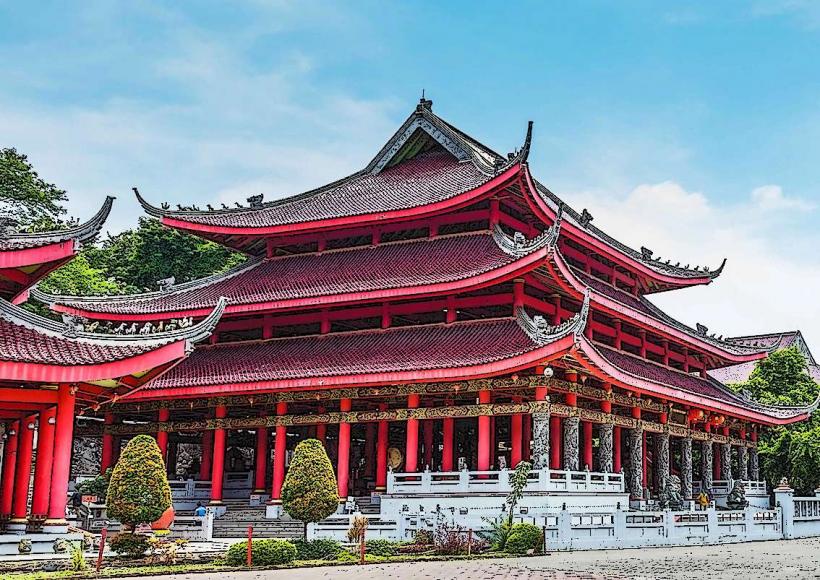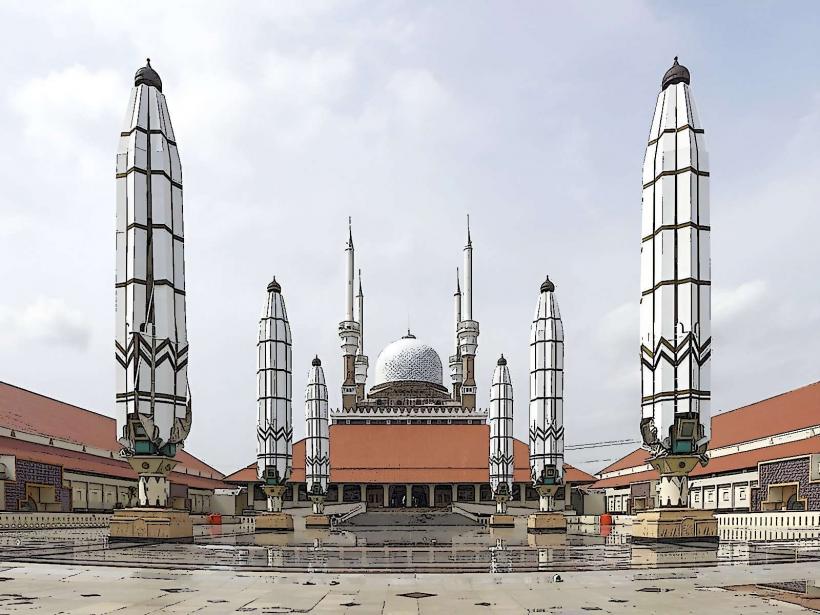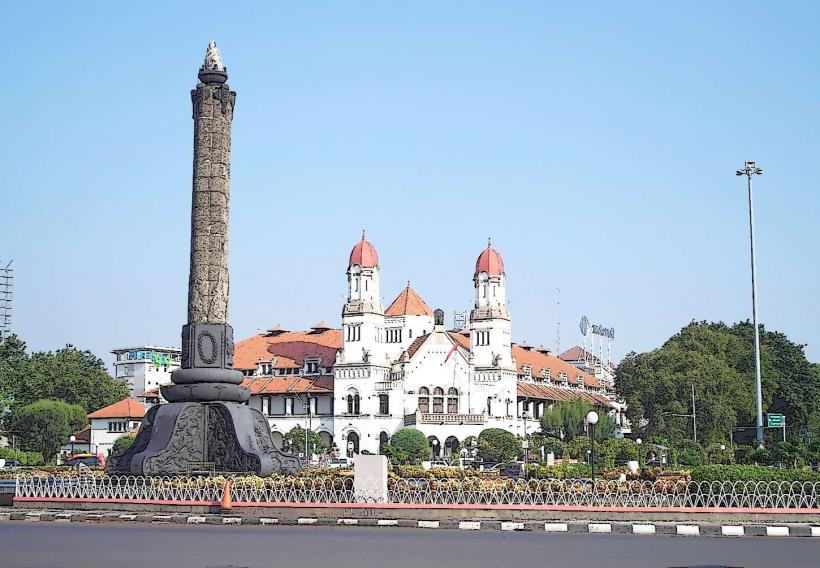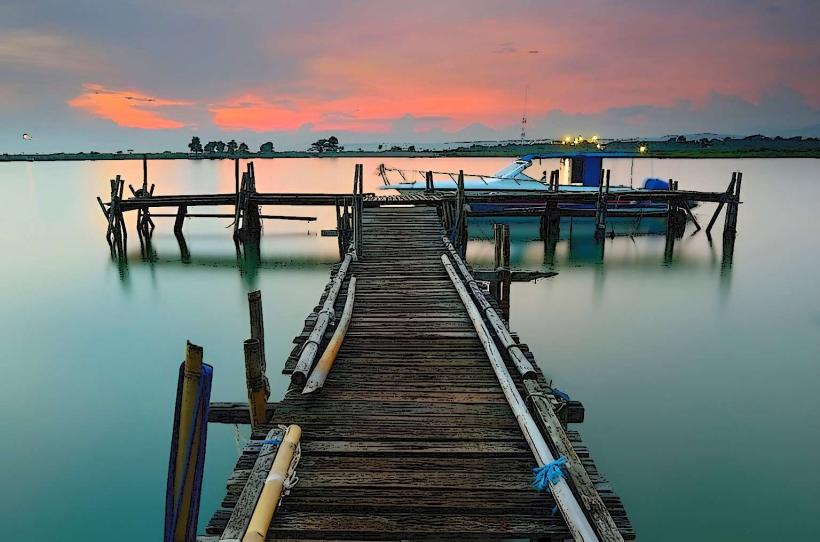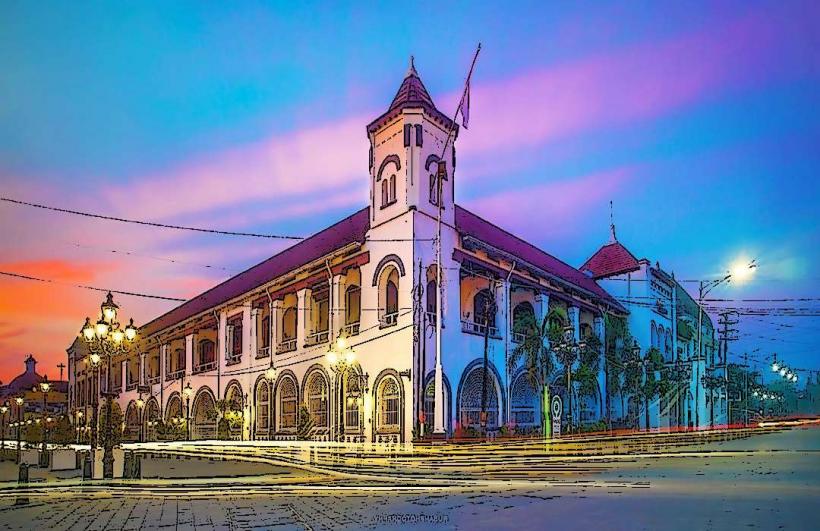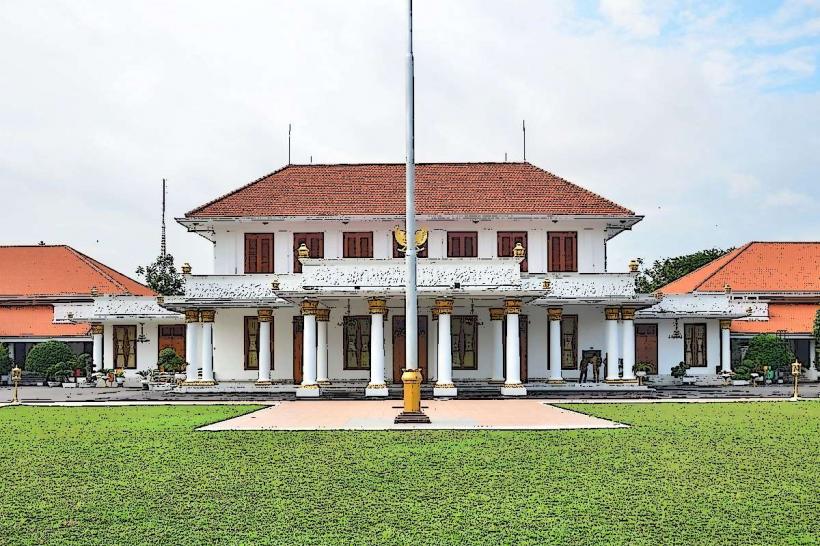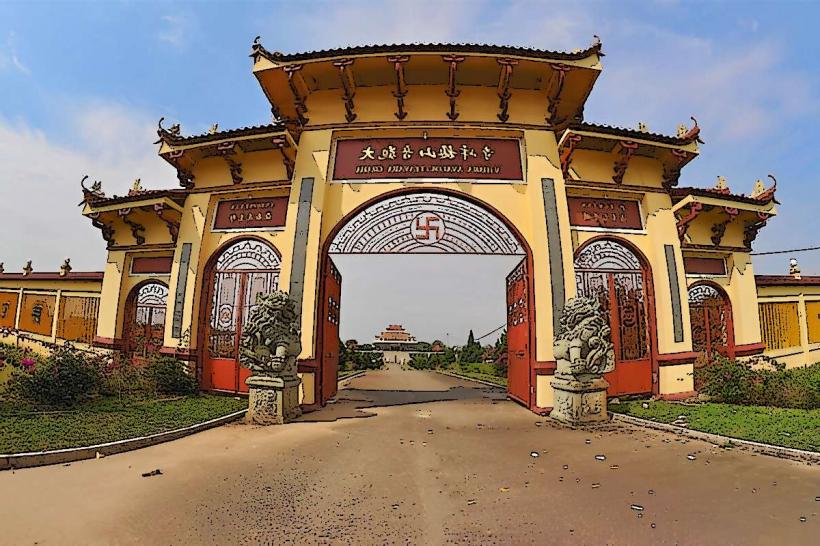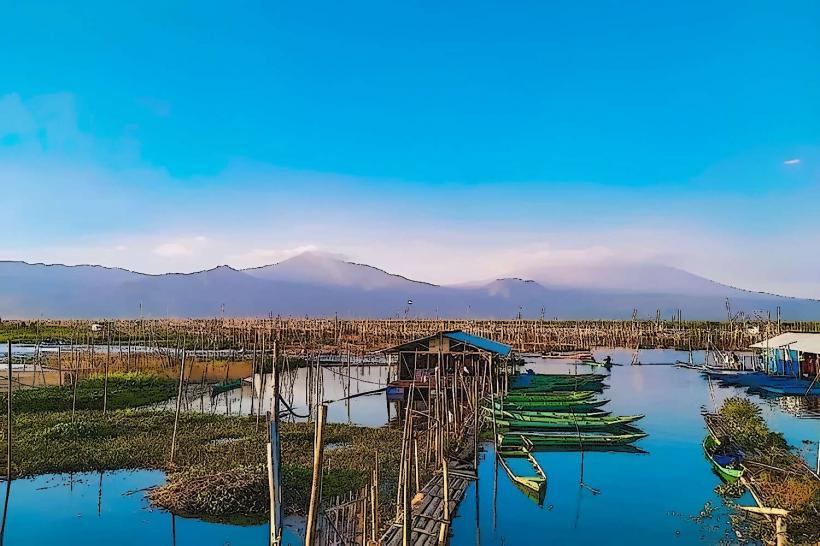Information
Landmark: Lawang SewuCity: Semarang
Country: Indonesia
Continent: Asia
Lawang Sewu: The Thousand Doors
Lawang Sewu is a historical landmark and architectural marvel located in Semarang, Central Java, Indonesia. Translating to "Thousand Doors" in Javanese, the name refers to the building's numerous doors and windows, which give it a distinct and grand appearance. Built during the Dutch colonial era, it has since become one of Semarang's most iconic landmarks, attracting tourists for its stunning architecture, historical significance, and intriguing stories.
Key Highlights of Lawang Sewu
1. Historical Background
Construction and Purpose:
- Lawang Sewu was built in 1904 and completed in 1907 by the Dutch East Indies government.
- It served as the headquarters for the Nederlandsch-Indische Spoorweg Maatschappij (NIS), the Dutch East Indies Railway Company.
- Its strategic location near Semarang's Tugu Muda monument underscores its importance during the colonial period.
World War II:
- During the Japanese occupation of Indonesia (1942–1945), the building was repurposed as a military headquarters.
- The basement was reportedly used as a prison and torture chamber, adding to its eerie reputation.
Post-Independence:
- After Indonesia gained independence, Lawang Sewu housed various government offices, including the Indonesian National Railways (PT Kereta Api Indonesia).
- It was later abandoned and fell into disrepair before being restored and opened to the public as a historical site.
2. Architectural Features
Dutch Colonial Design:
- Designed by Dutch architects J.F. Klinkhamer and B.J. Queendag, Lawang Sewu is an excellent example of Dutch colonial architecture with an emphasis on functionality and elegance.
Unique Characteristics:
- The building is known for its tall windows and doors, giving the illusion of having a thousand doors, although the actual number is fewer.
- It features high ceilings and wide corridors, designed to optimize ventilation and natural lighting, which is essential for the tropical climate.
- Intricate stained-glass windows depict Dutch and Indonesian cultural elements, showcasing the blend of styles.
Main Structures:
- The complex consists of several interconnected buildings, including:
- Building A: The most iconic structure, featuring a large dome and stained-glass windows.
- Building B: Known for its long corridors and spiral staircases.
- Building C: Houses underground tunnels and basements used during the Japanese occupation.
3. Cultural and Historical Significance
Symbol of Semarang:
- Lawang Sewu is a proud symbol of Semarang’s rich history and architectural heritage.
- It represents the city’s development during the colonial era as a major hub for transportation and trade.
Heritage Site:
- In 1992, Lawang Sewu was designated as a cultural heritage building, ensuring its preservation for future generations.
4. Mystical Reputation
Haunting Stories:
- Lawang Sewu is considered one of the most haunted places in Indonesia, attracting visitors intrigued by its paranormal reputation.
- The basement prison cells, where many were reportedly tortured during the Japanese occupation, are said to be the most haunted area.
Ghost Tours:
- Visitors can join guided night tours that highlight the building’s eerie atmosphere and share ghost stories associated with the site.
5. Restoration and Modern Use
Renovation:
- In 2009, the Indonesian government began extensive renovations to restore the building’s original beauty and structural integrity.
- The restoration preserved the historical elements while modernizing certain aspects for tourism.
Tourism:
- Today, Lawang Sewu is a popular tourist attraction offering historical insights, architectural tours, and cultural events.
- It also hosts art exhibitions, photography sessions, and educational programs.
6. Visitor Experience
Activities:
- Guided Tours:
- Learn about the history and architecture through detailed explanations provided by guides.
- Photography:
- The building’s stunning design and intricate details make it a favorite spot for photographers.
- Cultural Events:
- Attend exhibitions and performances held in the building’s spacious halls.
Accessibility:
- Located near Tugu Muda, the site is easily accessible from Semarang city center.
- Facilities include parking areas, restrooms, and a small café.
7. Practical Information
- Location:
- Jalan Pemuda, Sekayu, Semarang, Central Java, Indonesia.
- Opening Hours:
- Daily from 8:00 AM to 9:00 PM.
- Entrance Fee:
- Affordable entrance fees, with separate charges for night tours.
- Best Time to Visit:
- Morning or late afternoon for daylight photography and night for those interested in its paranormal allure.
8. Nearby Attractions
- Tugu Muda Monument: A historical monument commemorating Indonesia’s struggle for independence.
- Sam Poo Kong Temple: A beautiful temple complex showcasing Chinese-Javanese architecture.
- Old Town Semarang (Kota Lama): Explore the colonial-era buildings and vibrant cafés in this historic district.
9. Tips for Visitors
- Bring a Camera: Capture the unique architecture and historical charm of the site.
- Stay Respectful: Avoid making loud noises, especially in areas considered sacred or historically significant.
- Guided Tours: Opt for guided tours to gain deeper insights into the building’s history and cultural importance.
- Prepare for Paranormal Encounters: If joining the night tour, be ready for spine-chilling stories and a mysterious ambiance.
10. Conclusion
Lawang Sewu is more than just a building; it is a testament to Semarang’s rich history, architectural excellence, and cultural significance. Whether you’re a history enthusiast, architecture lover, or thrill-seeker drawn to its haunted reputation, Lawang Sewu offers a unique and unforgettable experience.

